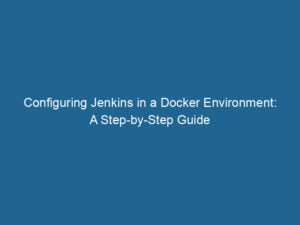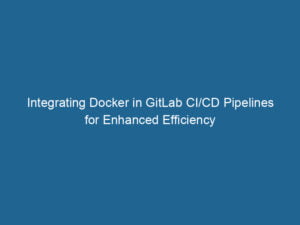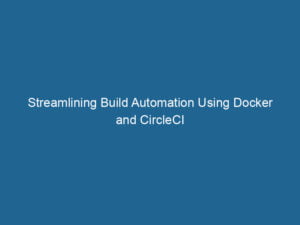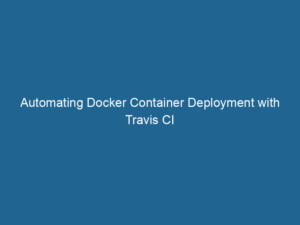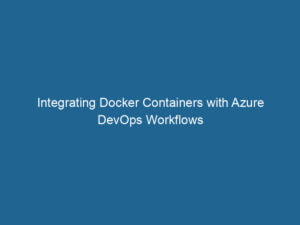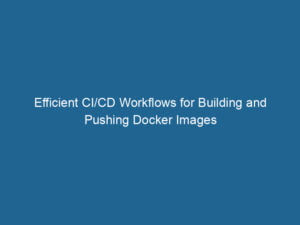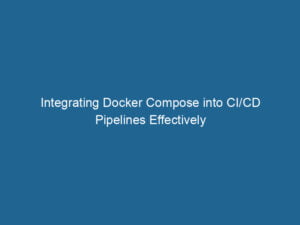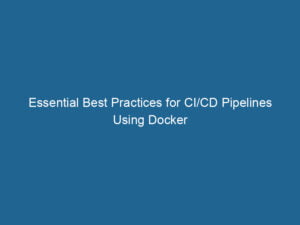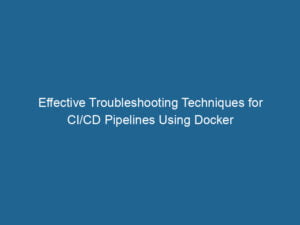Continuous Integration and Continuous Deployment (CI/CD) have become essential practices in modern software development, ensuring that changes can be seamlessly integrated, tested, and deployed. Docker, a platform that automates the deployment of applications inside lightweight containers, plays a pivotal role in enhancing CI/CD processes. By leveraging Docker, teams can achieve consistent and reproducible environments across different stages of the development lifecycle. This article explores how Docker can be integrated into CI/CD pipelines and highlights key practices and tools to optimize this integration.
Understanding CI/CD Pipelines Using Docker
To effectively integrate Docker into your CI/CD workflows, it’s crucial to understand the fundamental principles of CI/CD pipelines. A comprehensive guide on Understanding CI/CD Pipelines Using Docker provides an excellent starting point, detailing the stages of code integ#ration, testing, and deployment, all within Docker containers. This ensures that applications behave consistently across development, testing, and production environments.
Configuring Jenkins in a Docker Environment
Jenkins is one of the most widely used CI/CD tools, and configuring it within a Docker environment can significantly streamline your build processes. A Step-by-Step Guide to Configuring Jenkins in a Docker Environment walks you through setting up Jenkins in Docker containers, enabling easier management and scalingScaling refers to the process of adjusting the capacity of a system to accommodate varying loads. It can be achieved through vertical scaling, which enhances existing resources, or horizontal scaling, which adds additional resources…. of build agents. This setup simplifies maintenance and provides a portable CI/CD solution.
Integrating Docker in GitLab CI/CD Pipelines
GitLab CI/CD offers robust integration capabilities with Docker, enhancing the efficiency of your build and deployment processes. By Integrating Docker in GitLab CI/CD Pipelines, you can automate the building, testing, and deployment of Docker images. This approach minimizes the overhead of managing dependencies and environments, ensuring that your applications are always deployed in a consistent state.
Streamlining Build Automation Using Docker and CircleCI
CircleCI is another popular CI/CD tool that pairs well with Docker for build automation. By Streamlining Build Automation Using Docker and CircleCI, you can set up efficient workflows that automatically build and test your code changes in Docker containers. This not only speeds up the development cycle but also improves the reliability of your builds.
Automating Docker Container Deployment with Travis CI
Travis CI is known for its simplicity and integration with GitHub. By Automating Docker Container Deployment with Travis CI, you can leverage its capabilities to build and deploy Docker images seamlessly. This integration allows for continuous deployment, where every commit can trigger a new deployment, ensuring that your applications are always up to date.
Integrating Docker Containers with Azure DevOps Workflows
Azure DevOps provides comprehensive tools for CI/CD, and integrating Docker containers into these workflows can enhance your deployment processes. The guide on Integrating Docker Containers with Azure DevOps Workflows covers the necessary steps to build, test, and deploy Docker images using Azure Pipelines, providing a scalable solution for enterprise applications.
Efficient CI/CD Workflows for Building and Pushing Docker Images
Efficiency is key in CI/CD processes, and having optimized workflows for building and pushing Docker images is crucial. The article on Efficient CI/CD Workflows for Building and Pushing Docker Images offers insights into best practices and tools that can help streamline these tasks, ensuring faster build times and reliable deployments.
Integrating Docker Compose into CI/CD Pipelines
Docker ComposeDocker Compose is a tool for defining and running multi-container Docker applications using a YAML file. It simplifies deployment, configuration, and orchestration of services, enhancing development efficiency…. More is a powerful tool for defining and running multi-container Docker applications. By Integrating Docker Compose into CI/CD Pipelines, you can automate the orchestrationOrchestration refers to the automated management and coordination of complex systems and services. It optimizes processes by integrating various components, ensuring efficient operation and resource utilization…. of complex environments, making it easier to manage dependencies and services required by your applications. This integration simplifies testing and deployment, ensuring that all components of your application work together seamlessly.
Essential Best Practices for CI/CD Pipelines Using Docker
To maximize the benefits of Docker in CI/CD, it’s important to follow best practices. The article on Essential Best Practices for CI/CD Pipelines Using Docker provides valuable tips on maintaining security, efficiency, and scalability in your pipelines. These practices help ensure that your CI/CD processes are robust and resilient to changes.
Effective Troubleshooting Techniques for CI/CD Pipelines Using Docker
Despite best efforts, issues can arise in CI/CD pipelines. Knowing how to troubleshoot these issues effectively is crucial for maintaining smooth operations. The guide on Effective Troubleshooting Techniques for CI/CD Pipelines Using Docker offers strategies and tools for diagnosing and resolving common problems, helping you maintain the reliability of your pipelines.
In conclusion, integrating Docker into your CI/CD workflows can significantly enhance the efficiency, consistency, and reliability of your software development processes. By leveraging the guides and best practices mentioned above, you can ensure that your CI/CD pipelines are optimized for performance and resilience, ultimately leading to faster and more reliable software delivery.


